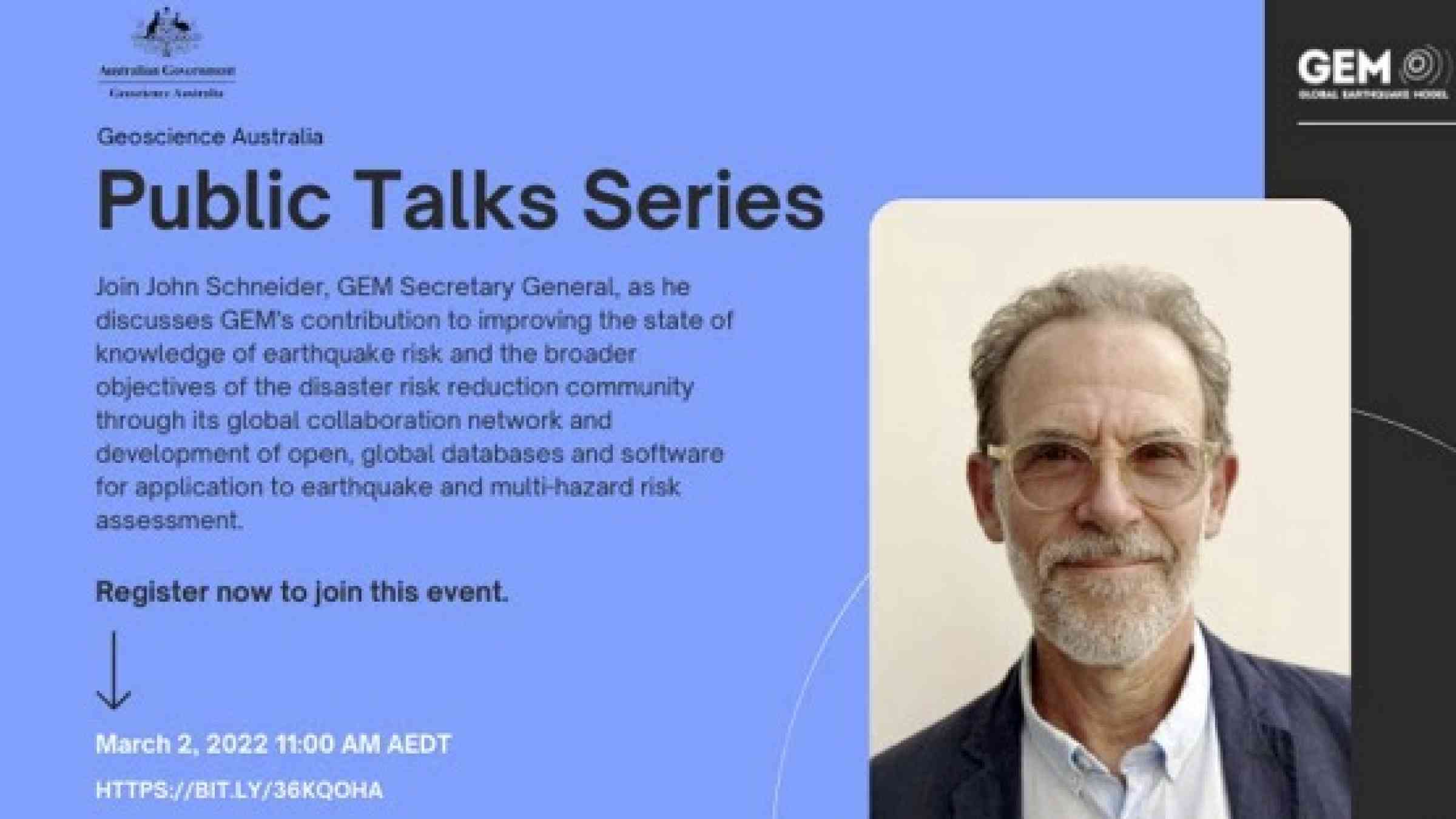The Global Earthquake Model: Achievements and Future Directions

- English
Time
11:00 AM AEDT
The Global Earthquake Model (GEM) Foundation was formed in 2009 as a non-profit body in Pavia, Italy, funded through a public-private partnership with the vision to create a world that is resilient to earthquakes. In March 2009, GEM held its first official workshop at Geoscience Australia, as part of GEM1, its initial scoping project. Geoscience Australia officially joined GEM as a public sponsor in 2010 and has continuously supported GEM since then. This seminar will review GEM’s key achievements and look into the future of GEM to 2030.
In 13 years, GEM has become known worldwide for its contribution to improving the state of knowledge of earthquake risk. GEM has also contributed substantially to the broader objectives of the disaster risk reduction community through its global collaboration network and development of open, global databases and software for application to earthquake and multi-hazard risk assessment. GEM’s open-source software, OpenQuake, and resulting hazard and risk models are used for a wide range of applications. These include design criteria for critical facilities through to national building regulations, and include earthquake scenarios and alerts for emergency management through to risk financing and insurance applications. In 2018, GEM used OpenQuake to generate a global mosaic of earthquake hazard and risk maps resulting from the collaboration of dozens of institutions and hundreds of experts worldwide. Included in this mosaic is Australia’s national hazard and risk model prepared by Geoscience Australia.
GEM’s strategy and roadmap to 2030 is underpinned by the global drivers for disaster risk reduction and sustainability established in 2015 - namely the Sendai Framework, the Paris Agreement on climate change, and the Sustainable Development Goals – and by its four core values: openness, collaboration, public good and credibility. GEM will strive to maintain its leadership in earthquake risk assessment and knowledge dissemination, and to further develop into a global leader in integrated, multi-hazard risk assessment and resilience planning. As part of this strategy, GEM will leverage its experience in global exposure modelling into partnerships addressing the effects of climate change risk; it will seek improvements in modelling to incorporate the broader impacts of disasters, including systemic and cascading risks, and disaster recovery. As part of this journey to 2030, GEM looks forward to continuing its fruitful collaboration with Geoscience Australia.